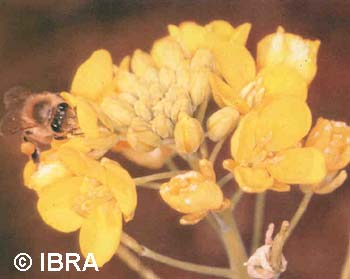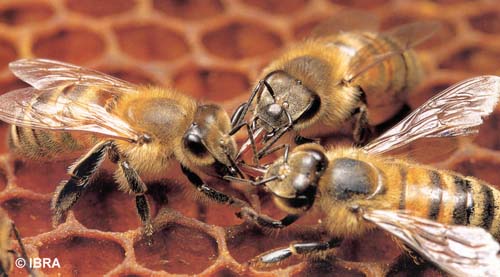
| Economic and Food Value of Pollinators |

| 2/6 |

|
It is estimated that more than 150 (84%) of European crops are directly dependent upon insects for their pollination [1]. European crops for which the number of fruits and seeds and their quality are dependent upon, or enhanced by, insect pollination include [2, 3]: ●Fruits – apple, orange, tomato, pear, peach, melons, lemon, strawberry, raspberry, plum, apricot, cherry, kiwifruit, mango, currants, olives and grapevine ●Vegetables – carrot, potato, onion, pepper, pumpkin, field bean, French bean, eggplant, squash, cucumber, and soy bean ●Seeds and nuts – sunflower, almond, walnut and chestnut ●Herbs – basil, sage, rosemary, thyme, coriander, cumin and dill ●Industrial crops – cotton, oilseed rape, white mustard, and buckwheat ●Fodder crops for animals – alfalfa, clover and sweetclover ●Essential oils – chamomile, lavender, and evening primrose |

| Home |
| Plan of Action |
| Links |
| Organisation |
| Participate |
| Value of Pollinators |

|
Crop pollination by honeybees alone is estimated to be worth €4.25 billion per year in Europe [4]. Honeybees have declined significantly across Europe in recent decades due to diseases such as Varroa and tracheal mites, and these declines are predicted to persist [3]. Between 1992 and 2002, hive numbers have decreased in: Austria (13%), Germany (11%), France (10%) and Ireland (9%) [5]. Dependence upon a single pollinator for crop production can be a risky strategy and many other pollinator species are known to provide excellent pollination services. Honeybee derived products like honey and wax also have an important economic value. Annually 130,000 tonnes of honey are produced in the EU [6].
|


|
References: [1] Williams, I.H. (1994) The dependence of crop production within the European Union on pollination by honeybees. Agricultural Zoology Reviews 6: 229-257. [2] Corbet, S.A., Williams, I.H. & Osborne, J.L. (1991) Bees and the pollination of crops and wild flowers in the European Community. Bee World 72: 99-116. [3] Williams, I.H. (1996) Aspects of bee diversity and crop pollination in the European Union. In: The Conservation of Bees (eds Matheson, A., Buchmann, S.L., O'Toole, C., Westrich, P. & Williams, I.H.), pp. 210-226. Linnaean Society Symposium Series 18. Academic Press, London, UK. [4] Borneck, R. and Merle, B. (1989) Essaie d’une evaluation de l’incidence économique de l’abeille pollinisatrice dans l’agriculture européenne. Apicata 24: 33-38. [5] Beekeeping.com: www.beekeeping.com/databases/europe_92_96.htm [6] European Commission: http://europa.eu.int/comm/agriculture/agrista/2003/table_en/index.htm
|

| Next |

| Previous |

|
secretariat@EuropeanPollinatorInitiative.org European Pollinator Initiative Coordinated by: Centre for Agri-Environmental Research Reading University, PO Box 237, RG6 6AR, UK |
